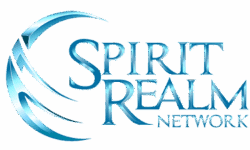William Westerfeld, a German-born confectioner, arrived in San Francisco in the 1870s and, by the 1880s, had established a successful chain of bakeries. T o accommodate his family of six, he commissioned local architect Henry Geilfuss to design a 28-room mansion featuring an adjoining rose garden and carriage house. The house was completed in 1889 at a cost of $9,985 (equivalent to approximately $338,600 in 2023).
 After William Westerfeld died in 1895, the mansion was sold to John Mahony of the Mahony Brothers, renowned for constructing the St. Francis Hotel and rebuilding the Palace Hotel following the 1906 earthquake. T o address San Francisco’s urgent housing shortage, Mahony replaced the rose garden with additional flats. In 1928, a group of Czarist Russians purchased the mansion. They transformed the ground-floor ballroom into a nightclub called Dark Eyes and used the upper floors as meeting rooms. This earned the house its informal nickname, the “Russian Embassy“.
After William Westerfeld died in 1895, the mansion was sold to John Mahony of the Mahony Brothers, renowned for constructing the St. Francis Hotel and rebuilding the Palace Hotel following the 1906 earthquake. T o address San Francisco’s urgent housing shortage, Mahony replaced the rose garden with additional flats. In 1928, a group of Czarist Russians purchased the mansion. They transformed the ground-floor ballroom into a nightclub called Dark Eyes and used the upper floors as meeting rooms. This earned the house its informal nickname, the “Russian Embassy“.
In 1948, the mansion was converted into a 14-unit apartment building. Over the next two decades, many of the units were rented to African-American musicians who performed in the neighborhood’s jazz clubs. Saxophonist John Handy was reportedly among the residents, although he later denied living there. In 1965, Charles Fracchia purchased the building as a residence but never moved in. The mansion was later mentioned in the book The Electric Kool-Aid Acid Test. It became home to The Calliope Company, a fifty-member collective.
In 1967, underground filmmaker Kenneth Anger moved in and filmed Invocation of My Demon Brother at the mansion. The film starred Bobby Beausoleil, a member of the Manson family, featured Anton LaVey, founder of the Church of Satan, and included music by Mick Jagger. In 1968, members of the Family Dog collective took up residence in the mansion while organizing acid rock concerts at the Avalon Ballroom. The house became a hub for the counterculture scene, frequently visited by members of the Grateful Dead and Big Brother and the Holding Company. Efforts to rehabilitate the mansion began in the 1970s.

 In 1969, two men purchased the property for $45,000 (equivalent to $374,000 in 2023) and extensively remodeled the fourth-floor servants’ quarters, transforming them beyond recognition. Despite an urban renewal project that demolished 6,000 Victorian-era buildings across a 60-block area in the Western Addition, the house was spared. In 1986, Jim Siegel purchased the mansion for $750,000. Since then, he has undertaken extensive renovations, including retrofitting the foundation, removing dropped ceilings, rewiring, re-roofing, replumbing, and restoring both the interior and exterior woodwork. He also revitalized the historic ground-floor ballroom, adorning its 25-foot (7.6m) ceiling with period wallpaper crafted by Bradbury & Bradbury. In 2018, the mansion was featured in an episode of the paranormal reality show Ghost Adventures.
In 1969, two men purchased the property for $45,000 (equivalent to $374,000 in 2023) and extensively remodeled the fourth-floor servants’ quarters, transforming them beyond recognition. Despite an urban renewal project that demolished 6,000 Victorian-era buildings across a 60-block area in the Western Addition, the house was spared. In 1986, Jim Siegel purchased the mansion for $750,000. Since then, he has undertaken extensive renovations, including retrofitting the foundation, removing dropped ceilings, rewiring, re-roofing, replumbing, and restoring both the interior and exterior woodwork. He also revitalized the historic ground-floor ballroom, adorning its 25-foot (7.6m) ceiling with period wallpaper crafted by Bradbury & Bradbury. In 2018, the mansion was featured in an episode of the paranormal reality show Ghost Adventures.







